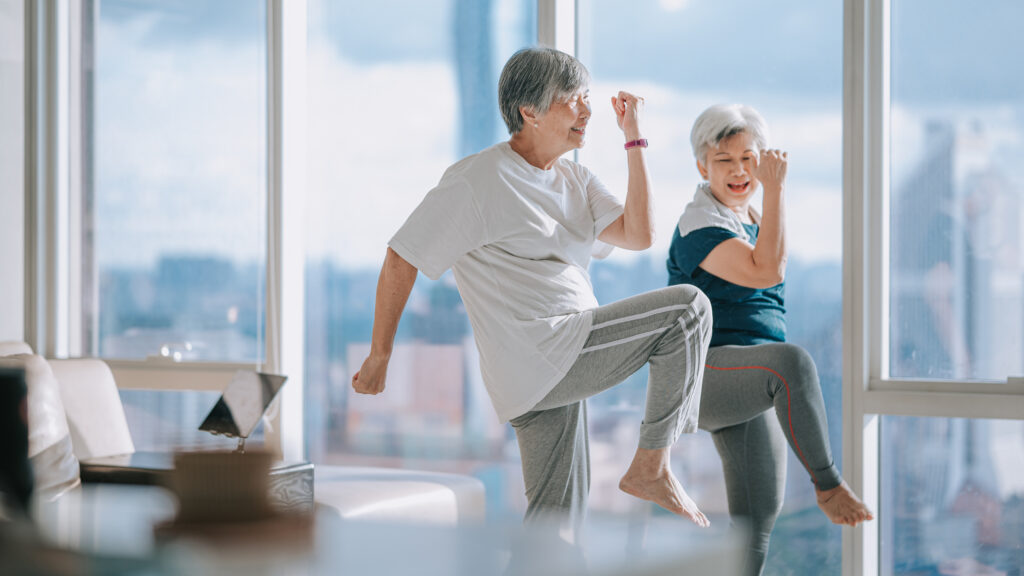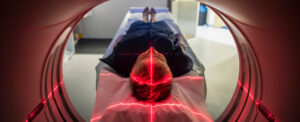
asian chinese senior woman friends enjoying home workout during evening in apartment living room
As people age, it’s common to experience a decline in balance and stability, leading to an increased risk of falls. However, according to exercise scientist and strength coach Pete Williams, there’s a simple exercise that can significantly improve strength and balance, reducing the risk of falls. This exercise, known as the “step and 90° rotation,” requires no equipment and can be easily incorporated into daily routines.
The announcement comes as many older adults seek effective ways to maintain their independence and prevent injuries. Williams, who is affiliated with Functional Medicine Associates, emphasizes that maintaining strength and balance is crucial for aging populations. He advocates for consistent practice of this straightforward exercise to enhance physical stability.
Understanding the Step and 90° Rotation
The step and 90° rotation exercise involves a series of movements designed to engage key muscle groups essential for balance. To perform the exercise, one must twist their torso to the right while raising the right knee to hip height, bending it to a 90-degree angle. After pausing to maintain balance, the participant steps forward with the right foot and repeats the motion on the other side. This alternating pattern continues for two minutes.
Williams explains that this exercise is beneficial because it targets the hip flexors and lateral glute muscles.
“Firstly, driving the knee high creates an action that develops strength and power in the hip flexors, which are the main muscle group that allows you to pick your foot off the ground and avoid those bumps in the pavement,” Williams tells Fit&Well.
Benefits of the Exercise
Beyond strengthening the hip flexors, the step and 90° rotation also engages the lateral glute muscles, which play a crucial role in maintaining proper hip alignment and balance during walking. Williams notes,
“On the other side you are working your lateral glute muscles which are important in keeping your hips tracking in the right position, which helps your balance and the biomechanics of your walking cycle.”
Incorporating rotational movement into the exercise further challenges balance by requiring control over an additional plane of motion. This aspect of the exercise also strengthens the outer calf muscles, which help stabilize the ankle and reduce fall risk.
Practical Tips and Safety Considerations
For those attempting the step and 90° rotation for the first time, Williams advises practicing in a safe environment.
“If you don’t feel stable while doing this exercise, try holding onto a wall when you lift your leg. Doing it between kitchen counters, as in the Williams’ demonstration, is also a good idea, so you have support within reach on both sides.”
Even Williams himself admits to occasionally wobbling during the exercise, highlighting its effectiveness in testing and improving balance. The simplicity and accessibility of this exercise make it an attractive option for older adults looking to enhance their physical stability and reduce fall risk.
Looking Ahead: Implications for Aging Populations
The move represents a shift towards preventive health measures that empower individuals to take control of their physical well-being. As the global population ages, exercises like the step and 90° rotation could become integral to maintaining quality of life and independence among older adults.
Experts suggest that incorporating such exercises into daily routines can have long-term benefits, potentially reducing healthcare costs associated with fall-related injuries. As more people become aware of these simple yet effective strategies, the hope is that fall rates will decline, leading to healthier, more active aging populations.
Meanwhile, organizations and healthcare providers are encouraged to promote awareness and education around balance-enhancing exercises. By doing so, they can support older adults in maintaining their independence and reducing the risk of falls.
As the conversation around aging and health continues to evolve, exercises like the step and 90° rotation will likely play a pivotal role in shaping the future of elder care and preventive health strategies.







